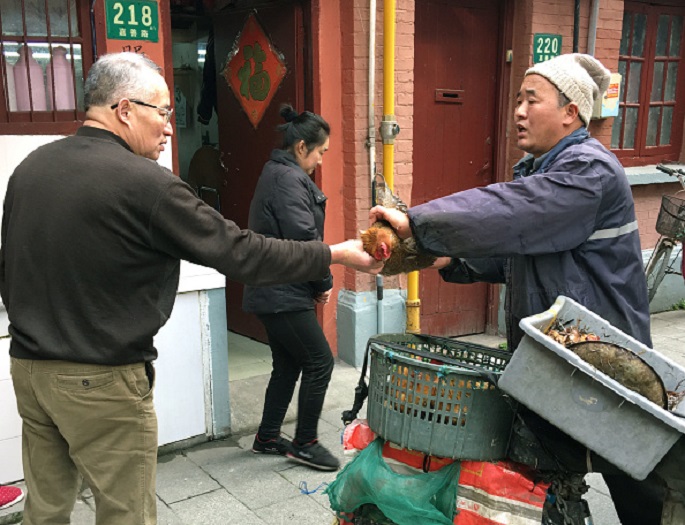As Chinese officials deals with H7N9 bird flu, one columnist reminds them about one of Benjamin Franklin’s more famous lines: “an ounce of prevention is worth a pound of cure.”
Before a bird flu pandemic fully erupts, China needs to reexamine its food safety measures, change some practices and reinforce biosecurity measures, according to Adam Minter, writing for Bloomberg.
For food safety, officials should reassess its status. They should uphold food safety by inspecting if food safety standards are met and ensuring regulations are strictly enforced.
Minter offers this suggestion to check if they are really doing their job: “Beijing should begin directly evaluating local officials for how well they promote food safety in their jurisdictions.”
Authorities already ordered markets selling live poultry to cease their operations for the time being.
The temporary closures of live poultry markets prove to be effective in preventing the transmission of the H7N9 avian flu virus.
Minter said that they should still do more than that because such move becomes “useless if wet markets simply return to their unhygienic practices after reopening.”
He, therefore, advises that the government should require wet markets “to modernize their own practices.”
In light of the H5N1 bird flu virus outbreak, the World Health Organization published a manual on March 2006 where it enumerates the right practices that should be observed in live animal markets.
According to WHO, food handlers and stall owners in wet markets are “lacking awareness about food safety and basic hygiene.”
Food safety and hygiene issues exist in the transportation of the animals, the maintenance and condition of the cages where they are kept and the disposal of their carcasses and other solid and liquid wastes.
WHO recommends, among many other things, that the place where the animals will be slaughtered be separate from the place where they will be sold.
Another basic step China should take to prevent the possibility of a bird flu pandemic concerns biosecurity measures.
“Biosecurity, as described by WHO in the manual, “includes the management of all biological and environmental health risks associated with food.”
It likewise “applies to public health measures that will reduce the contact between animals and humans.”
Avian influenza A or H7N9 was discovered in China in March 2013.
The H7N9 avian flu infects humans and birds alike. For infected humans, they usually get a fever and experience flu-like symptoms, such as headache, runny nose and muscle aches.
The people who contracted the virus were exposed “to live poultry or potentially contaminated environments, especially markets where live birds have been sold,” according to WHO.
According to the National Health and Family Planning Commission, there were 192 recorded H7N9 cases as of January 2017, reported China Daily.
By February, the number of fatalities reached 108, according to The Times of India.



























